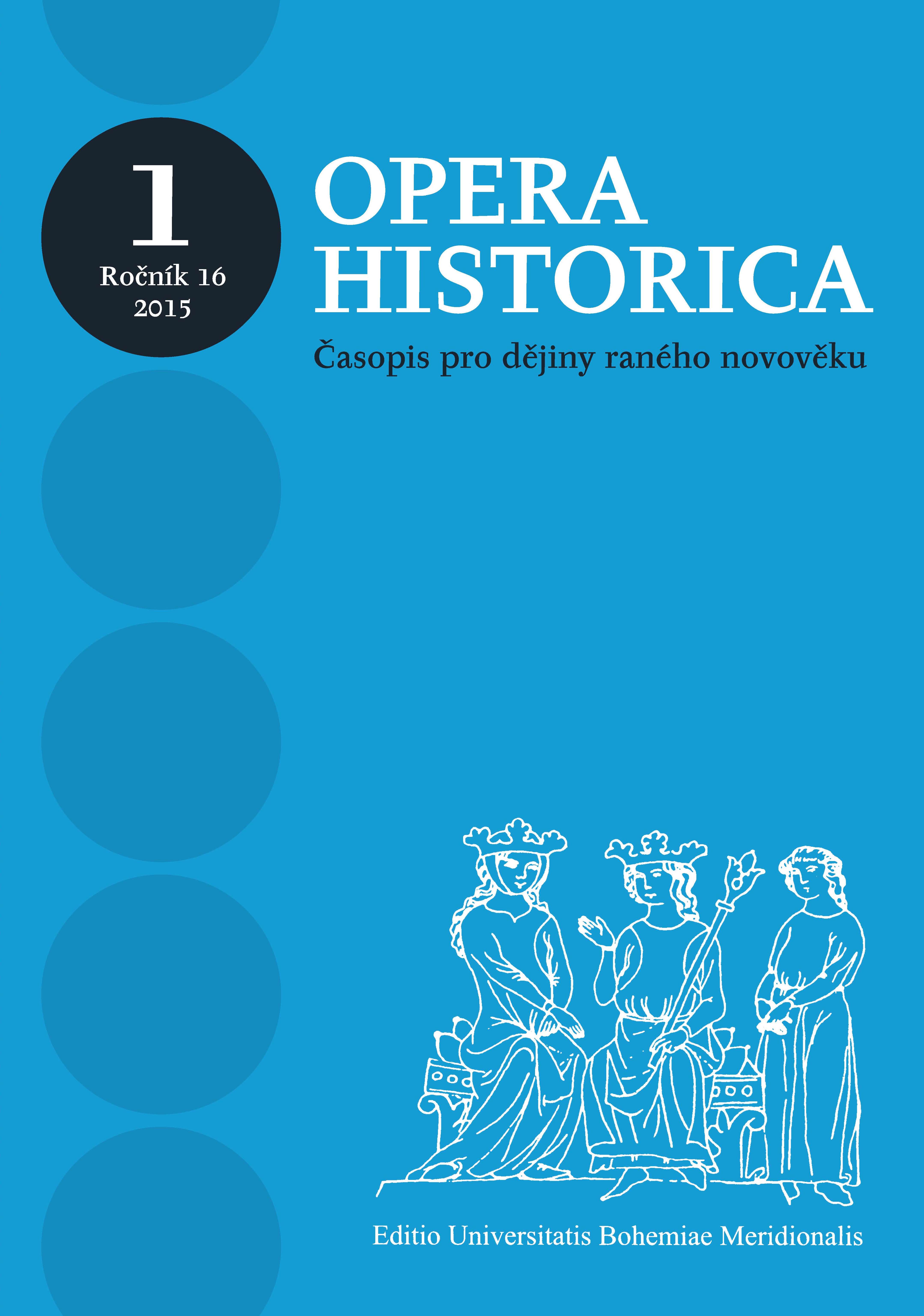Die Ungnads von Sonnegg – der lutherische Adel in der Habsburgermonarchie um die Mitte des 16. Jahrhunderts
Ungnads of Sonneck – Lutheran nobility in Habsburg monarchy around the half of 16th Century
Author(s): Václav BůžekSubject(s): History, 16th Century
Published by: Jihočeská univerzita v Českých Budějovicích
Keywords: Habsburg monarchy; 16th century; Lutheranism spread; nobility; transnational wedding alliances
Summary/Abstract: In the 1530s there were coming German-speaking followers of Lutheran reformationfrom Austrian lands to the South of the Kingdom of Bohemia whose life careers have notbeen paid attention by researchers. Also the Ungnads of Sonneck, who came from Styriaand Carinthia to settle down in the South of the land before the half of the 1530s, professedto the Lutheran confession. In 1534 Ondřej Ungnad of Sonneck gained the manorof Frauenberg which was given to him from Jan of Pernštein into lien possession. In thesame year Ondřej Ungnad of Sonneck married Bohunka of Pernštejn who was a daughterof Jan of Pernštejn’s youger brother Vojtěch. There were born four children of their marriage– sons Adam and David and daughters Mariana and Anna Marie. Ondřej Ungnadof Sonneck became one of significant patrons of moralistic and religious literature inthe Kingdom of Bohemia during the 1530s till 1550s. At the instance of him there weretranslated texts by Anton Corvinus, Johann Brenz, Johann Spangenberg, Filip Melanchtonand other reformers into the Czech language.The way of the new lien owner of Frauenberg towards Lutheranism was opened tohim probably by his older brother Hans Ungnad of Sonneck who in spite of spreadingof reformation ideas had taken up the office of land commissioner in Styria in year 1530.Because of theological disputes with Lutheran theologists he left to Urach in 1557 wherehe settled down under the protection of Christoph, Duke of Württemberg who belongedto most important supporters of reformation in the Holy Roman Empire in the halfof 16th Century. Hans Ungnad of Sonneck together with a Slovenian reformer PrimožTruber prompted translations of the Luther’s Bible into Croatian, Italian and Slovenianlanguages as well as its printing and distribution in Urach.The life of Ondřej of Ungnad of Sonneck’s sons used to be left without any attention.There has been partially researched only the career of his younger son David who studiedby Filip Melanchton in Wittenberg and became famous as a diplomat and military commanderin services of the Habsburgs. Some closer events of the short life of his elder sonAdam were noted by Bohemian warrior Pavel Korka of Korkyně in his memoirs. Thesetwo noblemen could have met each other during chivalric tournaments at the court ofArchduke Ferdinand of Tyrol. Their mutual relationship was deepened after the deathof his father when Adam Ungnad of Sonneck became the lien owner of Frauenberg. Thepossession of this manor had also been steadily attempted by Jáchym of Hradec, the chiefchancellor of the Kingdom of Bohemia.At the beginning of February 1561, Adam Ungnad of Sonneck was taken off the lienpossession of Hluboká manor. A year later there was written a record in the Land tablesaccording to which Ferdinand I of Habsburg granted the manor of Frauenberg to Jáchym of Hradec for the redemption of his financial claims into Jáchym’s hereditary possession.Some of related court meetings concerning the withdrawal of the right of lien to themanor of Frauenberg were attended by Adam Ungnad of Sonneck and Pavel Korka ofKorkyně who temporarily worked in Sonneck’s services. He was very likely involved alsoin his marriage with Elizabeth Thurzo of Bethlenfalva, a widow after Jaroslav of Pernštejn,which took place probably on 2nd November 1561 in Freistadt an der Waag, where thebride was seated.Allegorical wedding celebrations of Adam Ungnad of Sonneck marriage with ElizabethThurzo of Bethlenfalva were reflected in a Latin poem by an unknown humanisticauthor. Its verses praised graceful qualities of both the spouses through simple ancient andbiblical motives and there was also reminded the Christian mission of their mutual lifein marriage. The poet introduced the basis of Lutheran view of the God’s created bondbetween a man and woman which was theologically in accordance with the religiousattitudes of Adam Ungnad of Sonneck. Also Elizabeth Thurzo of Bethlenfalva had beenraised in Lutheran belief because her father belonged to the early followers of reformationin the Kingdom of Hungary. After the death of Adam Ungnad of Sonneck the widowedwoman got married for the third time with Julius I of Salm in year 1565.Although Ferdinand I of Habsburg was supporting transnational wedding alliancesof Catholic aristocratic men and women, the marriage of Adam Ungnad of Sonneck andElizabeth Thurzo of Bethlenfalva proved that there were without Ferdinand’s influencerealized also transnational weddings of noble spouses who confessed Lutheranism in theCentral-European monarchy around the half of the 16th century. The merits of such newlyformed broader relationships contributed to social development because there were arousedmutual travels, cultural exchange in the Danubian area and also language educationof the noble persons. These transnational relationships of aristocratic families contributedlast but not least also to developing awareness of commonly shared life space in the DanubianMonarchy with its rising power center at the royal court. There were more andmore common the meetings of mutually related aristocrats from different countries of theHabsburg composite state who appeared there in duty of administrative or court serviceswithout any regards to their confession.
Journal: Opera Historica
- Issue Year: 18/2017
- Issue No: 2
- Page Range: 221-237
- Page Count: 17
- Language: German

